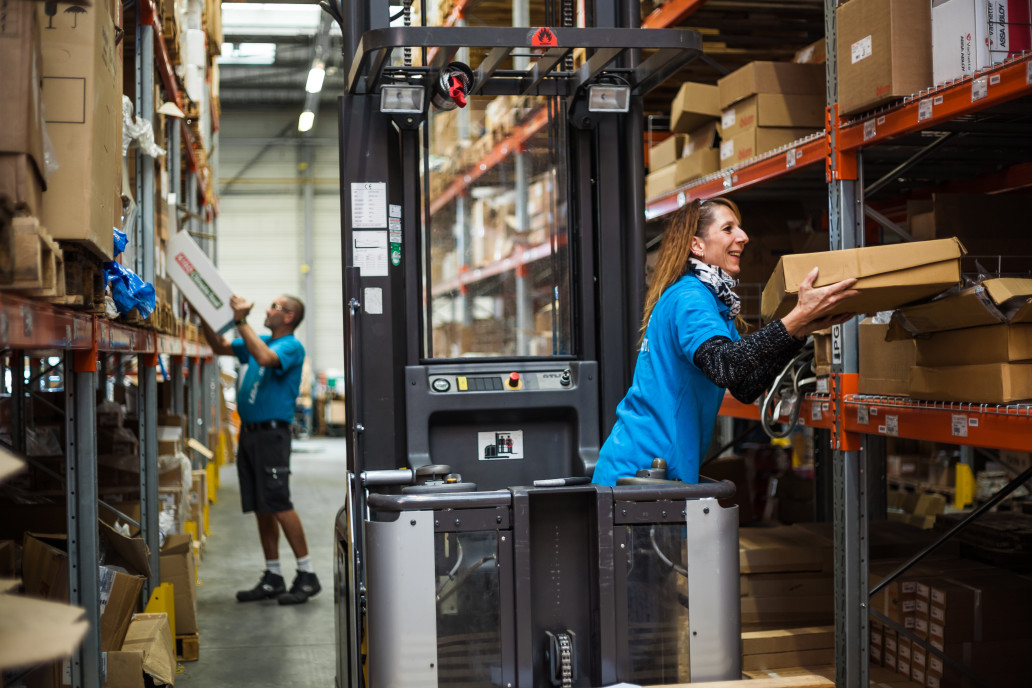For a 3rd Party Logistics vendor, Location Analytics becomes key to making decisions in strategy, city operations as well as business development. This article will help you realise how you can use location analytics to maximise resource utilization, optimize RoI and minimise user churn by fulfilling your SLAs.
Data Digestion and Hyperlocal Ops
With the growth of E-commerce, the logistic market has grown by leaps and bounds. In terms of revenue, the global logistics market is set to touch a CAGR of 3.48% from 2016 to 2022 and would capture a market valuing $12,256 billion by 2022.
What does this mean?
The three verticals that we just discussed have one thing in common- location data. Why is it important for a logistics business to know where certain events occur. With businesses trying to go hyperlocal for their strategy, marketing and operations management, it has become important to understand how you are performing in areas as granular as neighborhoods.
This knowledge is leveraged by companies to break down their problems into smaller geographical units and administer them individually. This includes identifying local problems, solving them via curated marketing and tracking your progress on the same.
What the Current Status Quo looks like:
- Cost/Trip: Logistics companies today have very less visibility on the total cost of shipping: the base charge and the surcharges per journey along with externalities such as extra costs per return journey, losses incurred due to cancellations etc. They end up paying overheads in different locations for different partners.
- Visibility: Logistics companies find out that one of their major pain points while expanding into a new area or breaching a new market is ensuring user acquisition. Knowing the user behaviour on a granular level allows you to shift your marketing to a hyper-local level.
- Data Diet: For most companies, their data split among many different systems like UPS/FedEx/Courier Billing, Label Generation Software, Tracking Systems etc. This makes it very complicated for companies to crunch data and get insights on all their different verticals in operations.
An Overview of Use cases for location analytics in logistics
Leveraging location analytics can help improve the overall efficiency and performance of your logistic service. Knowing where and why certain events happen can help you take desired action on them. With the use of analytics you can optimise your route/fleet utilisation, improve your shipping/order accuracy and bring down the percent of time/resources spent in reverse logistics.
City and Central Operations:
For any ops team some of the major areas of concern revolve around monitoring the fleet, minimizing delays, spotting patterns in anomalies, and ensuring that SLAs are met.
Delays and SLAs:
Measuring SLA (Service Level Agreements) compliance provides organizations quantifiable metrics to measure the performance accuracy in terms of how specific services are performed. In logistics, the SLA agreements have any of the two counterparts: carrier, fulfillment center merchant, or customer. Analyzing delays across:
- Routes: Which regions/routes/delivery partners have a historical pattern of strange anomalies indicating frauds leading to a violation of the SLA? Can alternates be figured out? Which freight or geographical region or parcel type takes the maximum time for delivery? Which laps are causing delays in the entire delivery process- warehouse, first mile or last mile? What are the causes for delays at every warehouse- dispatching, packaging, or assignments?
- Deviations: Which areas and routes have shown a history of anomalous delays because the delivery partner deviated from the suggested route? Having a centralized view of all your fleet metrics gives you a comprehensive view of your assets to ensure success. Proper fleet management helps in better risk assessment and optimization to ensure higher shipment and order accuracy.
Routine Checks:
Routine checks and measuring business health becomes very critical from time to time to become proactive with strategies. On the other hand, staying on top of your business with real-time insights to catch on anomalies also is very critical.
- Uptime: Which are your serviceable hours/day? Most logistics companies tend to have a high uptime (~99.99 % ) or availability round the clock to cater to a large number of shipments. After how many kilometers does the fleet require inspection? How many days does it remain unserviceable?
- Real Time Activity: Which are the locations where loading and unloading happens? Monitoring your fleet in real time just adds onto the greater responsibilities that result in a more efficient and healthy fleet, while allowing you to monitor accidents in real-time.
- Partner Profiles: What is the performance of your delivery partners? Can you segment them so as to maintain a higher level of customer satisfaction? Analysing which route the fleet takes and the hours of the day they approach a delivery destination can help you cut down the time lost in roadblocks and traffic jams.
Strategy and CXOs
Strategy teams often spend a lot of their time trying to win the battle in these verticals- maximising resource utilisation and understanding the cost of shipping. Taking decisions to optimize fleet operation begins and ends with tracking fleet performance metrics. They need to look at patterns in bottlenecks and take business decisions that have large impact.
Cost of Shipping
What’s most important is understanding pure shipment data to better understand what’s the total true cost of shipping to different parts of the world. Once you know your true costs, you can market more deeply into profitable regions as well as recost your shipping fees to areas where you’re losing money. Moreover, which areas and routes cause extra costs to be levied upon the base shipping costs for a journey?
Warehouse and Inventory
Just like any other metrics, your warehouses can tell you where you are excelling and where you need optimization or improvements. Understanding how often shipments come from multiple warehouses and how much inventory is accumulated at each of those centers is important. Which products have the highest shelf life? Which products need to be dispatched at the earliest? How far are your warehouses and fulfillment centres located from high demand areas?
Resource Optimization
What are the number of the resources ( freights/staffs) that are engaged in reverse logistics and is there any way to reduce this number by batching returns with deliveries? Which products need to be stocked for unforeseen events like disease outbreaks/natural calamities? What is your inventory to sales ratio? Tracking this metric can help you predict increasing inventory levels against dropping sales rate.
Customer Success
Customer support data helps to understand where late shipment anxiety is occurring, where people have the most problems with the product, where people are losing shipments most, etc. These can be determined by tags on the customer support ticket and other attributes. Logistics companies can focus on those locations followed by negative customer reviews which bear its brunt on the overall ratings of the logistics company or seller.
Latent Demand
Which regions show a high demand for any specific products? Which rural areas need to be reached? Knowing which areas have latent demand i.e., your users are needed for logistics but the absence of a proper supply medium breaks the chain- will help you plan the areas where you need to expand to.
Geo Targeted Campaigns
Order and sales patterns mostly rely on user buying behavior and hence understanding the trends shown by the users across locations is important for real-time action as well as future prediction.Which areas have low user demand and targeted ads need to be launched? How does the demand for certain products vary with respect to time (around festivals, weekends etc)?
Returns and Cancellations
Reverse logistics is a nightmare for organizations dealing with logistics and shipping. The returned packages directly inflate the operational expenditure without generating any return on investment. How does your return/cancellation rate look over time? Do they have a seasonal or demographic pattern? What is the geographical spread of losses due to returns?
Which routes and areas show the highest losses due to returns- in returning as well as refunding? What are the main causes of returns- poor inventory management or incorrect delivery addresses? Same issues exist with the cancellations of shipments as well, especially cancellations after the goods are shipped.
Why Locale?
Currently a lot of companies try to build these products internally. These companies have to create teams of Data Scientists who work for weeks to build a single dashboard-this leads to a lot of time and effort being devoted to each dashboard. On top of that, these dashboards often end up being non-scalable. As a result, companies are always on the lookout for products that can help their business teams leverage location data and make decisions without having to rely on the Engineering teams.
What do we do that sets us apart from any other options?
- We integrate into your system in less than 24 hours!
- We can handle tons and tons of data- above 55 million pings in production
- You can make decisions on any granular level- leveraging data both real-time, and historically!
- Our consoles are scalable as well as customisable- you measure what you want, when you want and make your decisions for any level of administration.
So if you are a 3PL executive, if you want to measure your business’ performance on a granular level, then you need to leverage your location data through a tool that allows you to use a microscope. We, at Locale are your microscope- you can make the decisions, while we do the crunching!



















































































